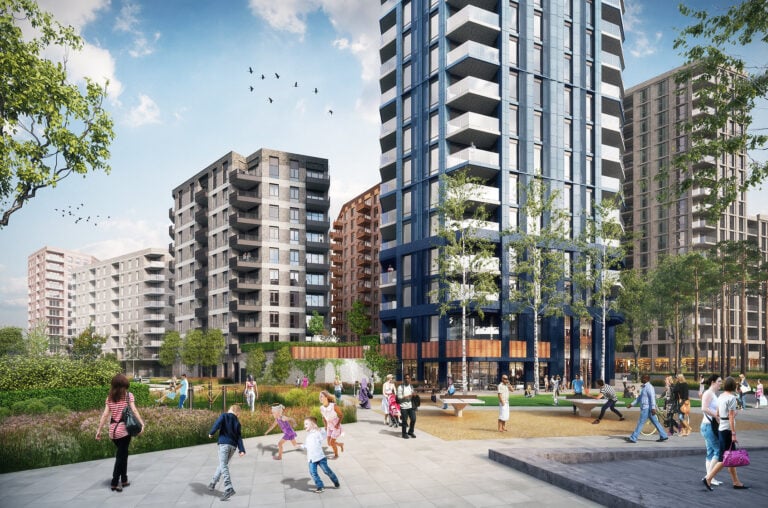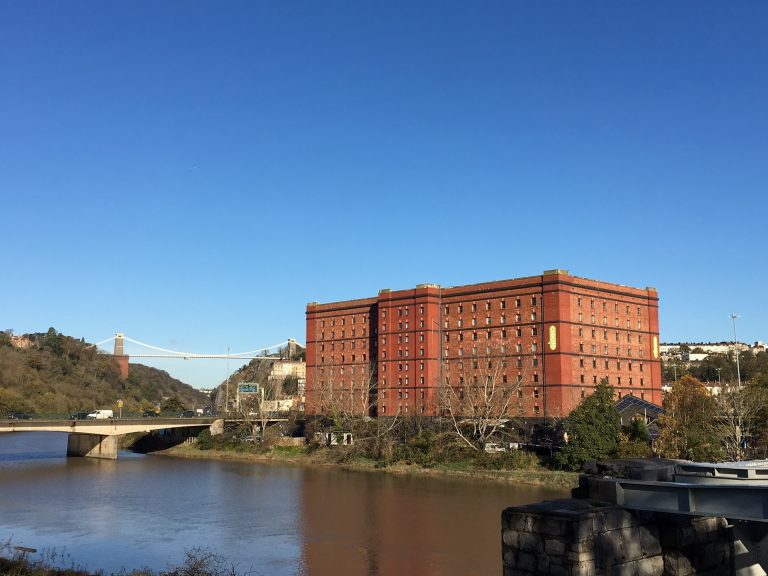Live, breathe and mean your approach to sustainable development if you want to achieve it

Muse Developments is a national urban developer that have been UKGBC members for over 10 years. Phil Marsden reflects on how they’re building a sustainability approach that they can live and breathe. Learn more from Phil below:
‘We’ve been working hard over the past year or so, to develop our approach to delivering sustainable regeneration in towns and cities, which we revealed at the end of last year… so, how’s it all going.
We took a very different approach to tackling the climate crisis and rather than launching a policy document that would gather dust on a shelf, we created a clear delivery strategy with objectives and clear targets to be achieved on all our schemes.
We’re now delivering on that strategy and on site with a number of sustainable office developments such as Eden – the 115,000 sq ft commercial building which is designed to be net zero in operation and with Europe’s largest living wall, which contains 355,000 plants to provide a haven for birds, bugs bees…and business. Our minimum biodiversity standards set at a 20% net gain in biodiversity, beating DEFRA’s new policy target of a 15% net gain.
Residential development comes with more challenges, but again we are delivering, bringing forward sustainable, affordable homes, such as Manor Road Quarter (804 homes, 50% affordable) and at Greenhaus (96 apartments) in Salford, which will be the first Passivhaus accredited, fully affordable housing development in Greater Manchester and the largest Passivhaus apartment scheme in the North West.’
How can you achieve this?
‘Firstly having a bold vision reinforced by an action plan containing clear and measurable targets is critical. This needs to be embraced by everyone in the business to create the culture necessary to deliver sustainable developments. Everyone involved in our projects needs to be passionate and tenacious about delivering for the benefit of the community and the environment. What’s also important is having a rigorous and intelligent design process, where the simple things are done well. There are many simple design principles, like a maximum of 40% glazing, which everyone should be adopting on projects now which add no cost whatsoever but make a significant difference in terms of carbon. The approach we take is to analyse every single aspect of the design.
I have to take this opportunity to credit organisations like the UK Green Building Council, Passivhaus Trust and Better Building Partnership, who have clear guidance and support for businesses across the built environment with a passion and commitment to delivering more sustainably. As an example, our office building, Eden, has been designed in line with UKGBC’s 2035 – 2050 standard and to target a 5.5-star NABERS rating, currently the highest in the country. Such accreditation will make sure the industry is being as transparent as possible.
In terms of policy, I’m looking forward to the introduction of updated building regulations in particular the Future Homes Standard, which will look to put some regulation and guidance in place for the delivery of buildings, bringing such standards in line with the requirements we have set ourselves at Muse.
The challenges remain and with ever increasing build costs comes further viability challenges. The fabric first approach to design is essential. We need to keep a positive mindset, looking at how to overcome viability challenges rather than focusing on the blockers and we must keep faith in our approach.’
What’s next for Muse on our journey and where are we going?
‘We want to help the sector in understanding how we can deliver more commercially-viable, sustainable, low-carbon developments that are cheap to run for residents, occupiers and investors. With that in mind, one of the initiatives we’re involved with is as a research partner with the University of Salford’s Energy House Labs programme. This will involve building a new home, designed with a fabric-first approach, in Energy House 2.0, which is a state-of-the-art research facility. Here we can test the home’s performance against various climatic conditions and the learning can be taken into the real world informing our design and construction methods. This means we can continue to push the performance of our housing design.’
We’re conscious that there’s been a lot of talk on our environmental approach to ESG, but what about social value?
‘To me, social value can be summarised as creating and maximising opportunities for local communities that would not exist without the development taking place. At Muse, our community engagement process makes sure that opportunities are tailored to meet local needs and requirements. This is about bringing forward real-life, human narrative of how our work has helped people… that’s true social value and it needs to be engrained in everything you do, including your culture. While it’s vital to have targets and a method of recording progress, the measurement of social value is purely the output of the community approach and should not be the main focus. It’s about outcomes not outputs. As we all work towards net zero, it’s crucial social value work should not be forgotten.
So, to close. We’ve always prided ourselves in delivering sustainable and community focused developments. But we have come a long way in a short space of time in terms of delivering exceptionally low energy and low-carbon projects. There remains a long way to go and we’re not standing still – and we’re constantly looking for ways to improve. As an industry, we all have a responsibility to deliver more sustainably, as we design and create new urban spaces.’
Phil Marsden is the director of Project Management at Muse Developments, who have been long standing UKGBC members.
Related
Financing energy efficient buildings: The path to retrofit at scale

Building climate resilience together

Consultation on the sector ambition for climate resilience and nature and biodiversity

Action ramps up on net zero carbon buildings

